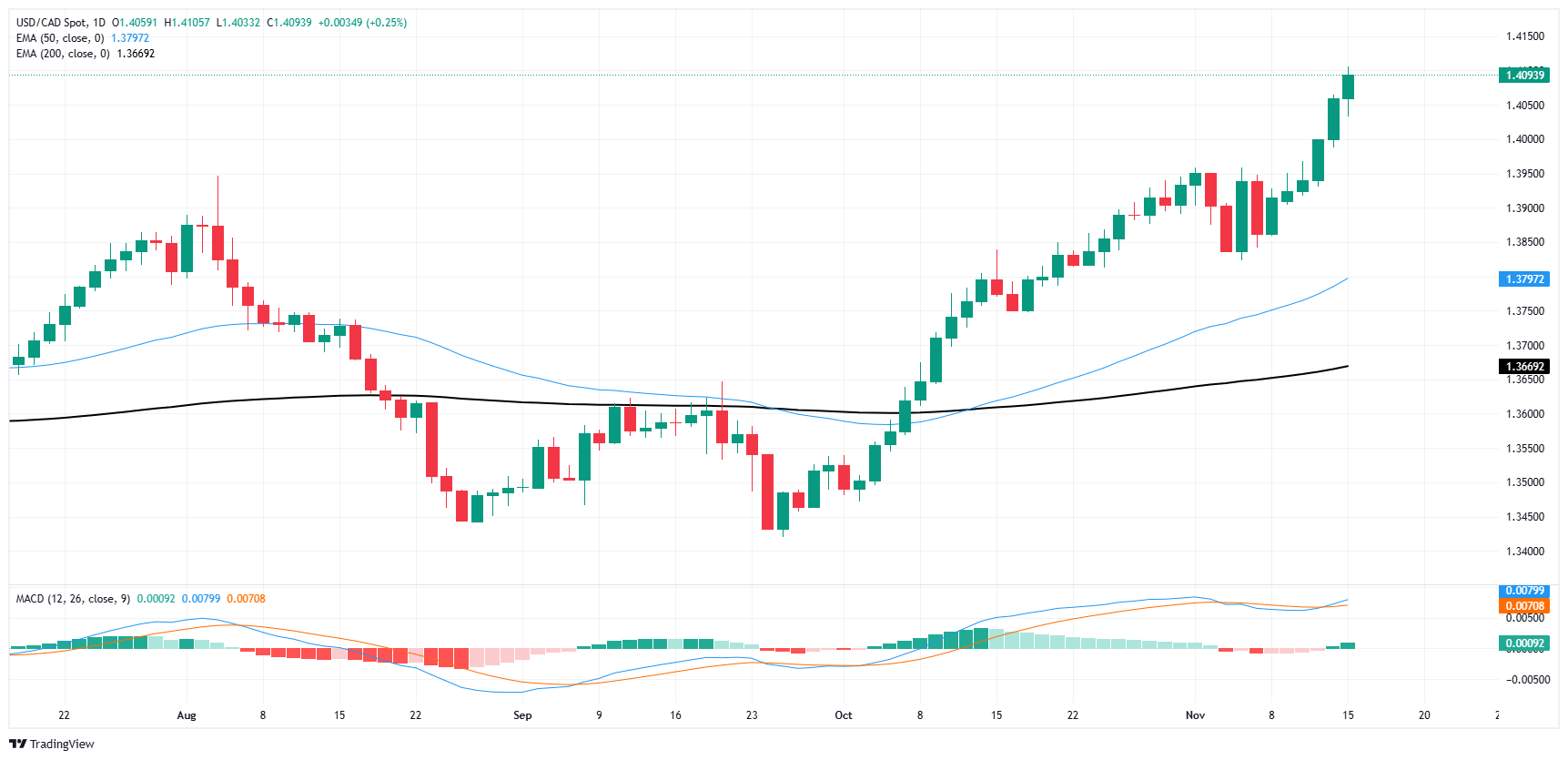- The Canadian dollar continued its decline on Friday.
- Canada remains irrelevant on the economic calendar.
- CAD traders await the release of the Canadian CPI next Tuesday.
The Canadian Dollar (CAD) found new lows on Friday as broader markets continue to pivot towards the safe-haven US Dollar. A slight hiccup in US retail sales was enough to boost the US dollar and push USD/CAD to new multi-year highs.
Canada remains absent from the economic calendar this week. A week of low-impact data has left the Canadian dollar on the ropes, but the release of the Canadian Consumer Price Index (CPI) next week probably won’t change things much.
Daily Market Summary: Canadian Dollar Falls to New 54-Month Low
- The Canadian dollar found a new four-and-a-half-year low on Friday, taking USD/CAD to 1.4090 for the first time since May 2020.
- Significant economic data from Canada remains completely absent from the economic calendar.
- CAD traders are unlikely to get a big boost from the Canadian CPI release next Tuesday as the Bank of Canada (BoC) is already accelerating the pace of interest rate cuts amid rapidly slowing inflation and an unbalanced economy.
- Canada’s economic metrics remain overly reliant on already high housing and accommodation prices that continue to rise into the stratosphere.
- US retail sales beat forecasts but still slowed in October. US retail sales slowed to 0.4% compared to the expected 0.3%, moving away from the revised September figure of 0.8%.
Canadian Dollar Price Forecast
The sky is the limit as the Canadian Dollar (CAD) continues to lose weight against the Dollar; USD/CAD’s renewed momentum towards multi-year highs has the pair testing bids just below 1.4100. The pair is on track to close in the green for the sixth consecutive trading day as the CAD retreats against the US Dollar.
The closest technical support lies at the latest low, aligned almost perfectly with the 50-day EMA near 1.3780.
USD/CAD Daily Chart
The Canadian Dollar FAQs
The key factors that determine the price of the Canadian dollar (CAD) are the level of interest rates set by the Bank of Canada (BoC), the price of oil, Canada’s main export product, the health of its economy, inflation and the trade balance, which is the difference between the value of Canadian exports and its imports. Other factors are market confidence, that is, whether investors bet on riskier assets (risk-on) or look for safe assets (risk-off), with the risk-on being positive for the CAD. As its largest trading partner, the health of the US economy is also a key factor influencing the Canadian dollar.
The Bank of Canada (BoC) exerts significant influence over the Canadian Dollar by setting the level of interest rates that banks can lend to each other. This influences the level of interest rates for everyone. The BoC’s main objective is to keep inflation between 1% and 3% by adjusting interest rates up or down. Relatively high interest rates are usually positive for the CAD. The Bank of Canada can also use quantitative easing and tightening to influence credit conditions, with the former being negative for the CAD and the latter being positive for the CAD.
The price of oil is a key factor influencing the value of the Canadian Dollar. Oil is Canada’s largest export, so the price of oil tends to have an immediate impact on the value of the CAD. Generally, if the price of oil rises, the CAD also rises, as aggregate demand for the currency increases. The opposite occurs if the price of oil falls. Higher oil prices also tend to lead to a higher probability of a positive trade balance, which also supports the CAD.
Although inflation has traditionally always been considered a negative factor for a currency, as it reduces the value of money, the opposite has actually happened in modern times, with the relaxation of cross-border capital controls. Higher inflation often leads central banks to raise interest rates, attracting more capital inflows from global investors looking for a lucrative place to store their money. This increases the demand for the local currency, which in the case of Canada is the Canadian Dollar.
The published macroeconomic data measures the health of the economy and may have an impact on the Canadian dollar. Indicators such as GDP, manufacturing and services PMIs, employment and consumer confidence surveys can influence the direction of the CAD. A strong economy is good for the Canadian dollar. Not only does it attract more foreign investment, but it may encourage the Bank of Canada to raise interest rates, resulting in a stronger currency. However, if economic data is weak, the CAD is likely to fall.
Source: Fx Street
I am Joshua Winder, a senior-level journalist and editor at World Stock Market. I specialize in covering news related to the stock market and economic trends. With more than 8 years of experience in this field, I have become an expert in financial reporting.







